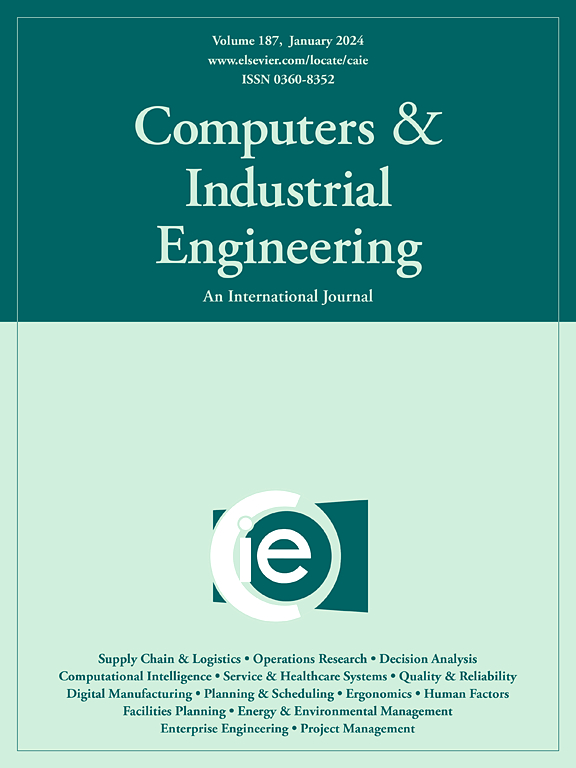Edge–cloud collaborative predictive auto-scaling for industrial IoT: A multi-objective optimization approach considering equipment health status
IF 6.5
1区 工程技术
Q1 COMPUTER SCIENCE, INTERDISCIPLINARY APPLICATIONS
引用次数: 0
Abstract
This paper presents an innovative edge–cloud collaborative predictive auto-scaling framework for Industrial Internet of Things (IIoT) environments, specifically addressing resource management challenges in equipment health monitoring and predictive maintenance scenarios. Traditional autoscaling approaches often fail to consider the equipment’s health status and its impact on resource demands, leading to suboptimal resource allocation and potential equipment risks. We propose a three-tier framework that integrates equipment health monitoring, workload prediction, and multi-objective optimization. First, we develop a novel deep learning-based workload prediction model incorporating equipment degradation indicators to accurately forecast resource demands. Second, we formulate a multi-objective optimization problem that simultaneously considers resource utilization, energy consumption, and equipment health risk. Third, we design an adaptive edge–cloud collaboration mechanism that dynamically adjusts resource allocation based on immediate equipment health status and predicted maintenance requirements. Through extensive experiments using real-world data from multiple manufacturing facilities, our approach demonstrates significant improvements over the baseline methods: 25% reduction in energy consumption, 30% increase in resource utilization, and 20% decrease in equipment health risk (). Furthermore, the framework shows robust performance under various industrial scenarios, including sudden equipment degradation and maintenance events. These results validate the effectiveness of our approach in managing IIoT resources while maintaining equipment reliability.
工业物联网的边缘云协同预测自动缩放:考虑设备健康状态的多目标优化方法
本文提出了一种创新的边缘云协作预测自动扩展框架,用于工业物联网(IIoT)环境,专门解决设备健康监测和预测维护场景中的资源管理挑战。传统的自缩放方法往往没有考虑设备的健康状态及其对资源需求的影响,导致资源分配不理想和潜在的设备风险。我们提出了一个集成了设备健康监测、工作负载预测和多目标优化的三层框架。首先,我们开发了一种新的基于深度学习的工作负载预测模型,该模型结合了设备退化指标来准确预测资源需求。其次,提出了同时考虑资源利用、能源消耗和设备健康风险的多目标优化问题。第三,我们设计了一种自适应的边缘云协作机制,该机制可以根据设备的即时健康状态和预测的维护需求动态调整资源分配。通过使用来自多个制造工厂的真实数据进行的广泛实验,我们的方法显示出比基线方法有显著改进:能耗降低25%,资源利用率提高30%,设备健康风险降低20% (p<0.05)。此外,该框架在各种工业场景下表现出稳健的性能,包括设备突然退化和维护事件。这些结果验证了我们在保持设备可靠性的同时管理工业物联网资源的方法的有效性。
本文章由计算机程序翻译,如有差异,请以英文原文为准。
求助全文
约1分钟内获得全文
求助全文
来源期刊

Computers & Industrial Engineering
工程技术-工程:工业
CiteScore
12.70
自引率
12.70%
发文量
794
审稿时长
10.6 months
期刊介绍:
Computers & Industrial Engineering (CAIE) is dedicated to researchers, educators, and practitioners in industrial engineering and related fields. Pioneering the integration of computers in research, education, and practice, industrial engineering has evolved to make computers and electronic communication integral to its domain. CAIE publishes original contributions focusing on the development of novel computerized methodologies to address industrial engineering problems. It also highlights the applications of these methodologies to issues within the broader industrial engineering and associated communities. The journal actively encourages submissions that push the boundaries of fundamental theories and concepts in industrial engineering techniques.
 求助内容:
求助内容: 应助结果提醒方式:
应助结果提醒方式:


